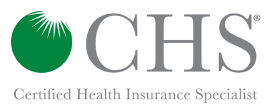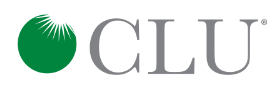Health and Wellness Spending Accounts
Group health plans can offer substantial coverage, but sometimes there are items that aren’t covered. This is where a Health Spending Account (HSA) can be useful.
The road to good health and wellness is pitted with expenses, from minor dental procedures to extended hospital stays. Even though British Columbians have access to the Medical Services Plan (MSP), which covers many basic health and medical services, the fact is it doesn’t provide enough coverage to take the financial burden of health care off your employee’s shoulders.
What are Health and Wellness Spending Accounts?
A Health or Wellness Spending Account is an individual account that allows your employees access to money intended to reimburse them for eligible expenses. Health and Wellness Spending Accounts can be set up as stand-alone items without a Group Benefits plan, or they can be supplementary to an Extended Health Benefits plan.
How Do Health or Wellness Spending Accounts Work?
Health and Wellness Spending Accounts essentially work like this:
• You, the sponsor, determine how much to include in each employee’s Health Spending Accounts on a yearly basis.
• Your employee pays for an eligible item out-of-pocket, then submits a claim for reimbursement.
• The plan provider processes each claim according to the plan rules you set forth.
• Your employee can submit eligible claims until the balance reaches zero.
• Pay only for the claims your employees use without Monthly or Start-up fees.
What are the Eligible Expenses for a Health Spending Account?
The Canada Revenue Agency has published an extensive list of medically related expenses that can be covered by your Health Spending Account. Employees receive these benefits Tax-Free. Some of the most common items include:
- Over-the-counter medications
- Medical equipment
- Prescription medication
- At-home nursing
- Some cosmetic surgeries
- Prescription glasses or contact lenses
- Paramedical services
- Dental expenses not covered by a health plan
Health Spending Accounts are often used to cover the outstanding amounts left over after standard health benefits are applied. For example, if your group benefits plan covers 80% of the cost of an eligible item, the Health Spending Account may be used to cover the leftover 20%. Health Spending Accounts can also be used to cover deductibles or dispensing fees.
Who Can Use a Health or Wellness Spending Account?
Health or wellness Spending Accounts mainly cover the employee they are allocated to. That said, if you opt to include your employee’s family in the plan, then spouses and dependents can also be covered by the Health Spending Account, or other plans that you may put in place.
Owners can also be on the plan and in some cases apply to the one-person companies or self-employed.
You can also add an HSA to a select group of employees you wish to compensate further, such as part of an executive compensation plan.
Why Choose Lifetime Benefits?
Although our health benefits plans already offer comprehensive health coverage for your employees and their families, our Health Spending Account picks up where those plans leave off. We offer the opportunity to create a Group Benefits Plan that includes a Health Spending Account, or a stand-alone plan. Thus making sure that you cover all the bases and that your employees aren’t out-of-pocket, covering expensive medical bills.
Are you interested in learning more about our Health Spending Account program? Contact us today.
Get a free no-obligation online quote for employee benefits by following the link:
Health and Wellness Spending Accounts FAQ
Most are, but an employer can choose to cover a percentage of cost – for example, 50% on sports equipment.
No, an employer can choose to cover some or all items – most accounts cover all.
No, only an insured plan.
A wellness account works like a health spending account but gives access to other non medical services and items such as gym memberships, vitamins and even pet care. It is very flexible and customizable.
Any claims made by an employee are considered a taxable benefit and added either to each paycheck or at the year end. All payments made by the employer are a business expense.
This is where you give an employee a set limit each year and they get to choose how much goes towards health expenses and how much towards wellness.
Yes an employer can set up co-insurance on a health or wellness spending account.
Yes, you can use a health spending account to top up a benefits plan or instead of certain benefits on a plan like eyewear. These are considered hybrid plans.
An employer provides an annual limit on health and dental spending for each employee. Employees purchase the services, prescriptions or supplies and make a claim. The employer pays the claim. This is a self fund plan and must be managed through a third party.
A HSA can be used for health and dental expenses that meet the criteria for the Medical Tax Credit as outlined in CRA Guideline 519. This covers most items and also includes travel insurance, personal health and dental premiums.
Yes, a health spending account is available in Canada. An HSA is also available in the United States but is very different.
A health spending account or HSA can be used for health and dental expenses, travel insurance, personal health and dental insurance plans.
For business owners who qualify, it turns your medical expenses into business expenses, so yes it is. It is also a great option to control costs for employee benefits and offer high flexibility for a healthier workforce.
Some plans allow for carry-over of one year. It is up to the employer if they wish to allow carry-over.
Some HSA providers require paper forms, or manual entry on a website. The good providers have an easy-to-use app where you take a picture of the receipt and submit the claim through your phone.
No, unfortunately they are not covered by a health spending account, but can be covered by a wellness spending account.
Depending on the provider, some require paper forms to sent by mail or manual entry on a website. The best providers have an easy-to-use app where you take a picture of the receipt and submit the claim through your phone.
Yes, you can claim costs associated with private health and dental premiums on your HSA if the employer allows it.
No (we include dental care in medical), but if your employer offers a wellness plan other expenses may be covered.
No, claims through an health spending account are non-taxable.
This is depending on the grace period of the plan and how it is set up by the employer. 90 days is most common and would only allow you to submit receipts from before termination.
For accounts that require money to be paid up front for employees, in some cases an employer can get them back but they would be taxed. For the best plans you only pay when a claim is made, so you would have no outstanding funds. However depending on the grace period for claims, you may still be responsible for late claims submitted during the grace period.






